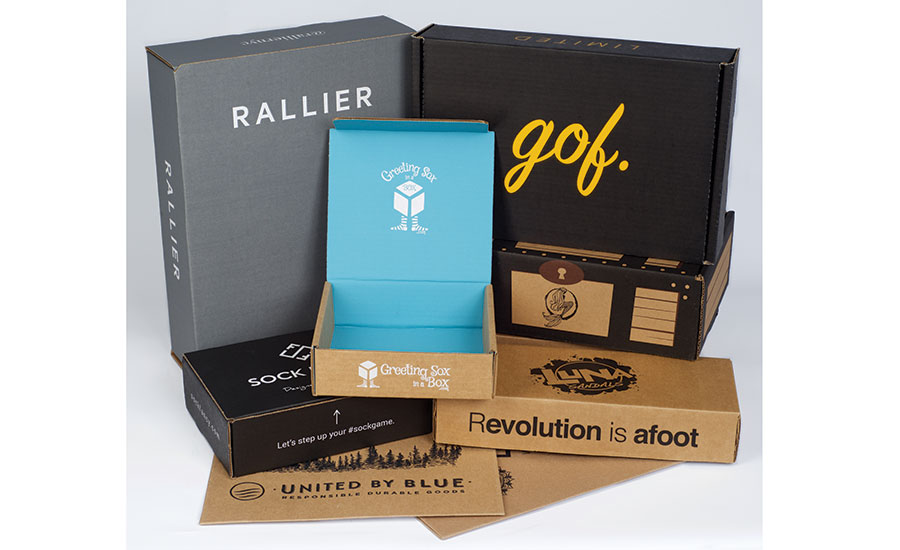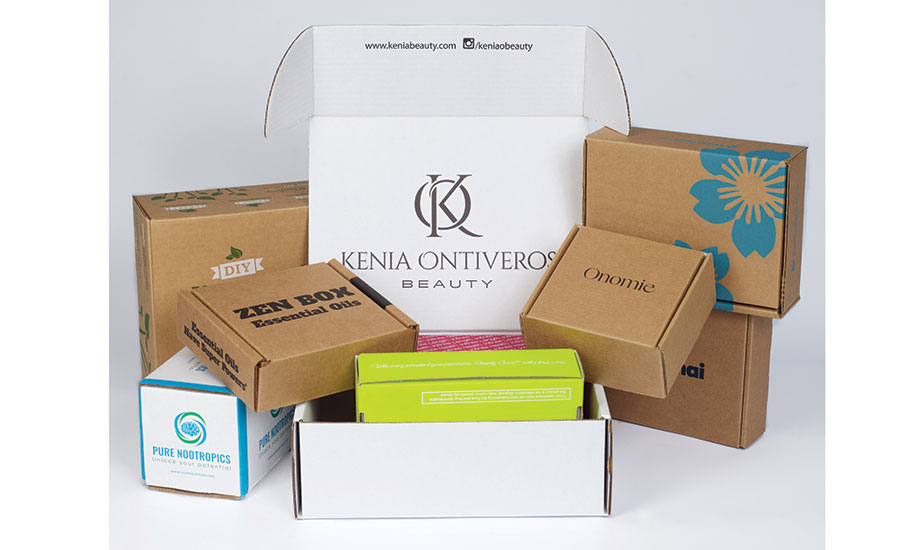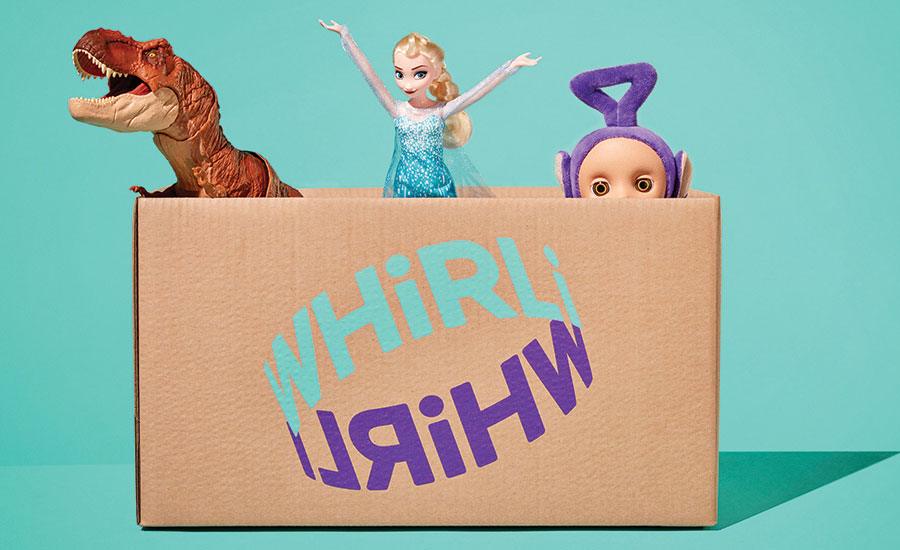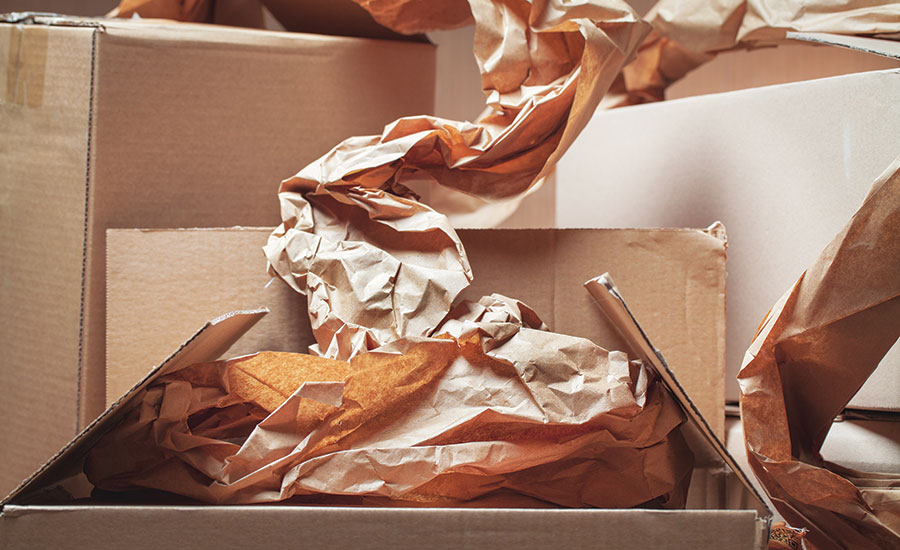In today’s connected world, consumers desire availability and speed with their purchases. Whether it’s food and drinks or clothing and cosmetics, we want everything fast, and we want it delivered undamaged. The rise of e-commerce packaging has soared to new heights, and a new set of parameters for packaging has come with it.
According to eMarketer, e-commerce sales are forecasted to reach $4 trillion globally by 2020. That’s a lot of home-delivered boxes and excited consumers — we hope.
With focus on the purchasing platform and the product photography and messaging at the start, we can’t forget about the unboxing experience. Brands must seek premium packaging and strive for differentiation for e-commerce packaging.
Packaging should be frustration free, include unique design features, be personalized and use at least some sustainable or reusable materials. Think: cosmetics packaged in a box that can be reused as a curio box — like Birchbox and Ipsy. The unboxing occasion has turned into a social affair, with shared photos on Instagram, Twitter and Facebook.

One company that understands the intricacies of the e-commerce consumer is Salazar Packaging (salazarpackaging.com). Dennis and Lenora Salazar launched the business when the economy was teetering in 2007. While searching for a niche in the market, they realized that “green” was red hot and pounced on it, in part due to the potential and because sustainability is consistent with how they live. Dennis says it led into branding because, for many companies, a green image is a major — if not primary — component of the brand.
The Salazars settled on green and branded packaging for e-commerce in many forms, including corrugated shipping containers and mailer envelopes. They create the structural design and provide assistance on the graphic design, including the printing method (flexography, offset, digital and more).
Salazar Packaging creates corrugated die-cut inserts to protect and present the products being shipped, which sets the company apart from other online printed box suppliers. “It is all about the customer experience,” explains Dennis Salazar, president and co-founder.
He adds that his company has become an expert at the right sizing and lightweighting of shipping B2C (business to consumer) containers in order to keep costs manageable for his customers.

When discussing trends, Salazar says he has seen a decline in subscription boxes because “most of the great ideas have been taken.” What was once seen as a gold rush has slowed as savvy entrepreneurs realize that the key is creating traffic to their site and being able to price compete in an increasingly crowded market.
However, there are still unique, timely ideas out there. Salazar offers these tips: be creative, fill a void in the marketplace and work a little harder for it.
There are two things his customers seek: presentation and protection. Price is a distant third because saving a few cents on a box can be counter-productive if you lose your customer experience in the process. Finding that balance is the key.
Salazar Packaging has helped launch brands such as Madison Reed, Plated, Warby Parker, Harry’s, Care Of and Swell.
For more information, visit salazarpackaging.com.
The Shareable Toy Box
Subscription boxes are a large part of the e-commerce market, and consumers are increasingly turning to them due to convenience.
Whirli, a new toy subscription service based in the U.K., is a parents’ dream come true. It’s all about swapping, not shopping.
Founder Nigel Phan had the idea after dining with friends who are parents. They described that how, after spending a lot of money on toys, their kids would tire of them after weeks — sometimes just days. It was proving difficult for the parents to find toys to match their child’s development, as development can change quickly.
Phan heard from many parents while developing Whirli. Children would get toys from birthday parties or holidays and not want the toy or they would get two or more of the same toy. “Flexibility is the key,” explains Phan. “Some parents prefer wooden toys, for example; some prefer old-school toys. Parents know what their kids want.”

The premise is simple: get, play, give and repeat. Parents or children pick the toys they want from the online site, the subscription box is delivered and voilà! Happy child, happy parents.
An unwanted toy gets a new home with another child. The subscription packages include delivery and return, free exchanges and the option to keep a toy if it’s been longer than nine months.
Subscriptions differ based on needs, households and so on — it’s a tiered service, with a three-month minimum subscription. “This way, you can see if you’re getting value because you can use the service and have the exchange service if needed,” Phan says.
Whirli launches a pilot next month, with full launch scheduled for February. “We don’t want to grow too quickly,” says Phan. “We don’t want customers to pay for a subscription and find toys are out of stock because too many kids want them.”
From the strategy and naming, to identity and launch, branding agency Ragged Edge (raggededge.com) worked with Phan to build the toy subscription service.
Soft pouches, without any small particles or fillers that could harm children, are used to package the toys. An extra sturdy box is used for the secondary packaging, so parents can reuse it in case they need to return a toy. Whirli then hopes to reuse the boxes as well. With the “soft launch” pilot, the company will see how many times the boxes can be reused.
Whirli is available in the U.K. only but may look to expand internationally.
Visit whirli.com for information.
Designing for Sustainability
How to reduce e-commerce waste in the packaging design phase.
by Jerome Magniet, president, Global Market Development - Food, GMD Food, Aptar
As e-commerce continues to grow, consumers are putting greater pressure on retailers and packaging manufacturers to lessen the impact that packaging has on our environment. According to GlobalData (globaldata.com), ethical packaging has become a more mainstream “must have” quality when purchasing a product. Sustainability-conscious consumers are seeking packaging that aligns with the circular economy concepts of designing out waste and pollution.
Today, excess waste from the e-commerce supply chain is piling up in garbage and recycling bins around the world. Mixed in with unnecessary tertiary packaging waste are the damaged products that did not survive the e-commerce supply chain.
Brands and retailers are taking extreme measures to protect packages that have not been designed to withstand the rough e-commerce distribution. They are taping spray nozzles, bagging liquid products and securing rigid lids to address the common issues of products leaking, caps untwisting and rigid packages cracking. Additionally, brands are using excessive tertiary packaging to protect goods. Besides creating an unpleasant unboxing experience to consumers, tertiary packaging creates waste since it is not always recyclable and often discarded upon arrival.

Energy waste is one more factor that needs attention. When products are damaged during shipping, not only are the products themselves ruined, they often end up in landfills, and the energy used to create, transport and dispose of the products is wasted. To replace the damaged item, additional energy is used to manufacture one additional item, its packaging and protective packaging as well as the additional carbon emissions generated from transportation.
Partnering for Packaging Progress
The hashtag #packagingfail has grown in popularity on social media as shoppers continually receive single items inside enormous boxes with excess air pillows or have to untape, unbag and break down excessive packaging. There are many protective layers used in today’s shipping practices but, the truth is, it’s not all needed.
E-commerce giants such as Amazon are actively working to address issues of oversized boxes and protective packaging through the Amazon Packaging Certification program. A 2017 press release stated that the program contributed to eliminating 181,000 tons of packaging and 307 million boxes since its launch 10 years ago.
While this addresses some of the waste issues, the responsibility also falls on manufacturers, suppliers and CPGs to reduce product waste and minimize excess tertiary packaging. Packaging companies can make a difference by collaborating with retailers like Amazon. One way to do this is through Amazon’s Packaging Support and Supplier Network (APASS) program. With this certification, packaging companies provide services directly to vendors, sellers or manufacturers related to packaging design and testing in compliance with Amazon’s guidelines and certification test methods. In addition, packaging manufactures also have the opportunity to partner with regulatory agencies to set standards for recyclability through public policy.
Companies should also consider partnering with waste management suppliers to better understand the recycling stream and to play a role in educating our communities about recycling practices.
A Packaging Design Mind Shift
When it comes to responsible packaging, a “Design for Sustainability” (D4S) approach is key for the development of future products. Companies need to consider how a product should be designed according to where it will have an impact along its life cycle.

Companies can also implement an eco-design approach using lightweight designs that will still withstand the rough e-commerce shipping and handling supply chain. They can also start to reduce the use of raw materials and seek opportunities to use mono-materials to improve the recyclability of the product at the end of its life. Identifying and using renewable energy sources, such as solar and wind power and hydroelectric energy, are additional sustainable practices that manufacturers can implement.
CPG brands should also look to partner with packaging companies that provide e-commerce–capable solutions such as sealing technologies, locking actuators, snap-top closures and pouch fitments. These solutions are engineered to withstand the vibrations, pressure changes and drops that occur in the e-commerce supply chain, therefore reducing product waste.
By rethinking primary packaging for the e-commerce supply chain, brands can reduce secondary and tertiary packaging waste, energy and damaged products. While a primary packaging redesign is an upfront investment, brands that significantly lower charges associated with shipping damage will contribute to downstream savings and bottom-line efficiencies. By partnering to reduce e-commerce packaging waste and to create design solutions that suit both brick-and-mortar as well as e-commerce business models, brands will see fewer effects to their bottom line associated with damaged products while providing consumers with the e-commerce experience they deserve.
Jerome Magniet is the president of Global Market Development for Aptar Food. He has 20 years of experience in innovation and renovation strategies, marketing, R&D, and people development. Prior to his current role, Magniet spent 17 years at Nestlé and held multiple roles with international assignments, including the innovation program director where he was responsible for breakthrough innovations across the value chain for systems and products.
Visit www.aptar.com, and follow Aptar on LinkedIn and Twitter at @aptar.
Porch Thievery
With the ease of clicking a button to get packages delivered to our doorstep comes the inevitable “porch pirates” — thieves who stake out residential areas just looking for loot. This past spring, Amazon took matters into its own hands with deliveries to members’ parked cars. It involves linking the Amazon app to the vehicle’s connected car service (OnStar or the like), to sync. This builds on last fall’s release of Amazon Key, the in-home service that allows delivery drivers to place packages inside homes of Amazon Prime members.
Amazon is the third top online marketplace in the world (first in the U.S.), according to Internet Retailer (internetretailer.com). Shorr Packaging (shorr.com) has released a 2018 report on package theft that is focused on Amazon package theft in cities across the United States. As online retailers continue to see record sales each year, the amount of doorsteps and mailrooms across the country remains highly vulnerable to package theft.
Last year, Shorr Packaging found that more than 31 percent of Americans had experienced package theft — and that number is expected to increase. In its latest report, the company analyzed Google search trends in the 50 largest cities across the U.S. to see where Amazon package theft is most concentrated.
In July 2018, the company used Google AdWords to assess the rolling monthly averages for the search term ‘Amazon package stolen,’ in the 50 most populous U.S. Cities, according to the 2017 U.S. Census. It then quantified the prevalence of searches by calculating searches per capital.
Top 10 U.S. cities where Amazon packages are stolen the most:
- San Francisco
- Seattle
- Minneapolis
- Boston
- Portland, Ore.
- Washington, D.C.
- Oakland, Calif.
- Baltimore
- Atlanta
- Sacramento, Calif.


